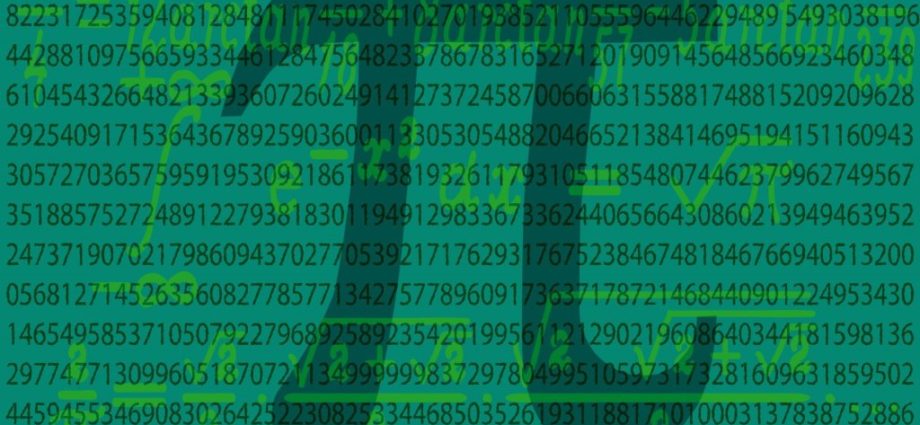
Photo from deposit photos
Today is Pi Day. This is a celebration that takes place all over the world to celebrate maths and that wonderful and special number that is pi.
Pi, denoted by the symbol π, is a Greek letter that is used to represent the ratio of circumference to diameter of a circle. You might remember the formula that the circumference s equal to 2πr from school. No worries if not as you can still enjoy learning a bit about pi and other fun maths stuff!
How does it work?
Well, it turns out that if you take the circumference of a circle and divide it by the circle’s diameter you get the number pi. Always, unfailingly. This is amazing! Now just to show how you get that formula (the one with 2πr…)
Let’s call the circumference C and the diameter d.
So we know that the ratio of C to d is π and so we can write

Now we can re-arrange by multiplying both sides by d. This gives

And since the diameter d is the twice the radius, we can say that d = 2r and so

Voila!
The history of pi
Pi has fascinated people for thousands of years. It was Archimedes (around 250 BC) who first came up with a method to calculate pi (although it wasn’t called pi then). You can read more about that here. Pi got its name and symbol is 1647 from William Oughtred, an English mathematician and then became universally used in 1737 by Leonhard Euler. The reason it is is because that is the first letter of the Greek word perimetros meaning circumference. Interesting eh?
Lots of decimal places!
Pi = 3.141592654…..but it just goes on and on!
Irrational number
Pi is an irrational number which means that you can’t write it as a ratio or fraction. It can’t be written exactly although it has been calculated to as much as 31 trillian digits. Having said that you really don’t need to use quite so many in your calculations!
As a matter of interest another irrational number is the square root of 2 and some other square roots…
Where do we see pi in maths?
So many places. We start with a circle, but we also need pi for surface areas and volumes of cylinders, spheres and cones. It also appears in the study of angles, trigonometry and in calculus…
You can see an example below, but you can also explore for yourself.
Radians and degrees
We are all probably fairly used to using and measuring angles using degrees. For example we can picture a right angle which is 90 degrees. However, sometimes it’s useful to use a different measure of angles called radians.
Let’s start with a circle. Imagine that you are going to cut slices out of it just as you would cut a cake (or a pie!)
One radian is defined as the angle at the centre for which the radius Is equal to the arc of the ‘slice’. See the diagram below.

If the radius is a length of r, then the arc is also a length of r.
Now we know that the circumference, C = 2πr
So if we divide by r this will tell us how many slices make up the whole circle.

So there are slices, each with an angle of one radian. This means that the whole circle has an angle of 2π radians.
We also know that a circle has an angle of 360 degrees and so
2π radians = 360 degrees.
This means that we can easily convert between radians and degrees.
The story is not over
According to the mathematicians, the Chudnovsky brothers:
“We are looking for the appearance of some rules that will distinguish the digits of pi from other numbers. If you see a Russian sentence that extends for a whole page, with hardly a comma, it is definitely Tolstoy. If someone gave you a million digits from somewhere in pi, could you tell it was from pi? We don’t really look for patterns; we look for rules.”
The search for learning about pi continues…
Before you leave, think about why today was chosen for this celebration…
Happy Pi Day!
Please follow us on social media, subscribe to our newsletter, and/or support us with a regular donation


